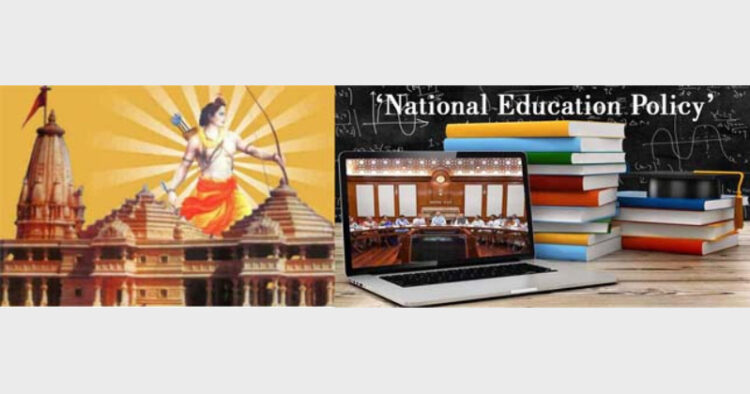“One of the serious complaints against the system of education which has prevailed in this country for over a century is that it neglected India’s past, that it did not provide the Indian students with a knowledge of their own culture. It has produced in some cases the feeling that we are without roots, in others, what is worse, that our roots bind us to a world very different from that which surrounds us”. – THE REPORT OF THE UNIVERSITY EDUCATION COMMISSION (DECEMBER 1948 – AUGUST 1949) headed by Dr S Radhakrishnan

In 1905, with the emergence of a nationwide movement for opposing the partition of a Bengal, Lokmanya Tilak was emerged as the first national leader of the freedom struggle. In the next fifteen years, his ideas, actions, imprisonments and programmes really turned the freedom struggle into a mass movement. His ideas of Swaraj based on the national character of education, economy, social reforms and polity were at the centre of national discourse by 1920. It was a fundamental shift from the then-prevailing wisdom which believed that the conscience of British people is fundamentally just, and if addressed through legal mechanisms, we can get a more significant say in the matters of Governance. When we are commemorating hundredth death anniversary year, we are witnessing another fundamental shift in our national consciousness and policies.
In his historic speech on January 3, 1906, at Benaras on the platform of the Bharat Dharma Mahamandal, Lokmanya Tilak gave a call, “to bring about a harmonious union of all sects and rightly claim and obtain our rightful place among the nations of the world”. What the Ram Janma Bhoomi movement has achieved in this direction is unprecedented. From north to south, east to west, the social and intellectual churning that took place in the context of Ayodhya, blurred the boundaries of castes, sects and regions. When the commencement of reconstruction of Ram Mandir is taking place on August 5, this should be seen as the creation of a new symbol of Swaraj. Sri Ram as the unifying force of this nation represents the moral character at individual and collective level. Restoration of His temple at the Janma Bhoomi site in Ayodhya is a resolve to idealise and actualise the same standards of morality that are preached in Valmiki Ramayana and practised by the Karmayogi like Lokmanya Tilak.
The adoption of the National Education Policy by the Union cabinet is another major breakthrough that we have achieved after a series of consultation with all the stakeholders. Besides proposing the structural changes in the system, the policy provides a framework for the modification in the content. It is in tune with our cultural ethos and changing needs of the time. It balances between local and universal in every possible term. Emphasis on the mother-tongue at the primary education level and allowing flexibility to choose subjects from various streams are the two exemplary instances. Lokmanya Tilak was the one to declare that “the classification of letters and sounds on which we have bestowed so much labour in India and which we find perfected in the works of Panini is not to be found in any other language in the world”. His efforts to bring in national character in education were mocked then, and now the people with the same colonised mindset are criticising the NEP 2020 without even reading it.
The ‘Swa’ in Swaraj was based on Swadeshi, Swabhasha and Swadharma. After Independence, the same spirit was evident when the Radhakrishnan Commission identified the neglect of our past as the most significant lacunae in the British Education, which unfortunately was never fundamentally corrected. Now, with the restoration of Ram Mandir and adoption of the National Education Policy, we are creating an unique opportunity for ourselves to retune to the Tilak’s concept of Swaraj.
@PrafullaKetkar













Comments